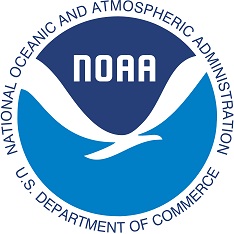NOAA examines impact of tourism and research on white sharks
 Press Release
Press Release
National Oceanic and Atmospheric Administration (NOAA)
24. March 2014
——————-
NOAA examines white shark activities in Gulf of the Farallones National Marine Sanctuary
NOAA is examining potential disturbances to the health and well being of white sharks that could occur from research and tourism in Gulf of the Farallones National Marine Sanctuary over the next five years, because they may disrupt the natural behavior of white sharks.
The public has an opportunity to review and comment on a draft programmatic environmental assessment that evaluates a range of potential white shark research techniques that might be used in the sanctuary, including the use of tracking devices, decoys, chum and shark cages.
The assessment expands on a previous draft analysis from 2010 that looked at the effects of a research project which placed small satellite transmitters on white sharks. It also evaluates shark dive tourism operations that use artificial seal decoys to attract sharks.
White sharks depend on the rich waters of the sanctuary, and as apex predators play a key role in maintaining a balanced ecosystem. Each fall, adult and sub-adult white sharks frequent the waters of the sanctuary. Adult white sharks are seen most frequently in the area between Tomales Pt., Año Nuevo Island and the Farallon Islands, where elephant seals and sea lions are abundant. Research that could be permitted after the assessment may aid in our understanding of these sharks.
NOAA developed the assessment to help make informed decisions on the best options to protect and conserve the white shark population that feeds and congregates in the sanctuary.
NOAA will accept public comments on the draft programmatic environmental assessment through April 23. The sanctuary is interested in hearing from all interested parties, including permit holders, shark conservation groups, the wildlife viewing community and general public.
Comments can be submitted in two ways:
● Electronically through the Federal eRulemaking portal: http://www.regulations.gov/#!docketDetail;D=NOAA-NOS-2014-0015,
● U.S. mail: Gulf of the Farallones National Marine Sanctuary
991 Marine Drive,
The Presidio San Francisco, CA 9412
The final programmatic environmental assessment is expected to be completed this summer.
The draft programmatic environmental assessment is available at the sanctuary’s office and website at http://farallones.noaa.gov/eco/sharks/sharks_pea.html.
Designated in 1981, Gulf of the Farallones National Marine Sanctuary encompasses more than 1,200 square miles of ocean and coastal waters beyond California’s Golden Gate. The sanctuary’s nutrient-rich waters provide vital nursery and spawning grounds for fish and shellfish and support the largest breeding seabird rookery in the contiguous United States.
Source: NOAA
Related Document:
DRAFT PROGRAMMATIC ENVIRONMENTAL ASSESSMENT OF POTENTIAL
WHITE SHARK RESEARCH AND EDUCATION PROJECTS WITHIN THE GULF OF
THE FARALLONES AND MONTEREY BAY NATIONAL MARINE SANCTUARIES
NOAA has released a Draft Programmatic Environmental Assessment (PEA) to evaluate possible permit activities anticipated to be proposed by research and education projects for which sanctuary staff can reasonably expect to receive permit applications over the next five years. These activities were evaluated because they may have the potential to affect white sharks within the Gulf of the Farallones National Marine Sanctuary (GFNMS) management area. This Draft PEA also considers various methodologies that may be proposed by applicants to conduct White Shark research or education projects in the sanctuaries.
 PDF – DOWNLOAD
PDF – DOWNLOAD
–
